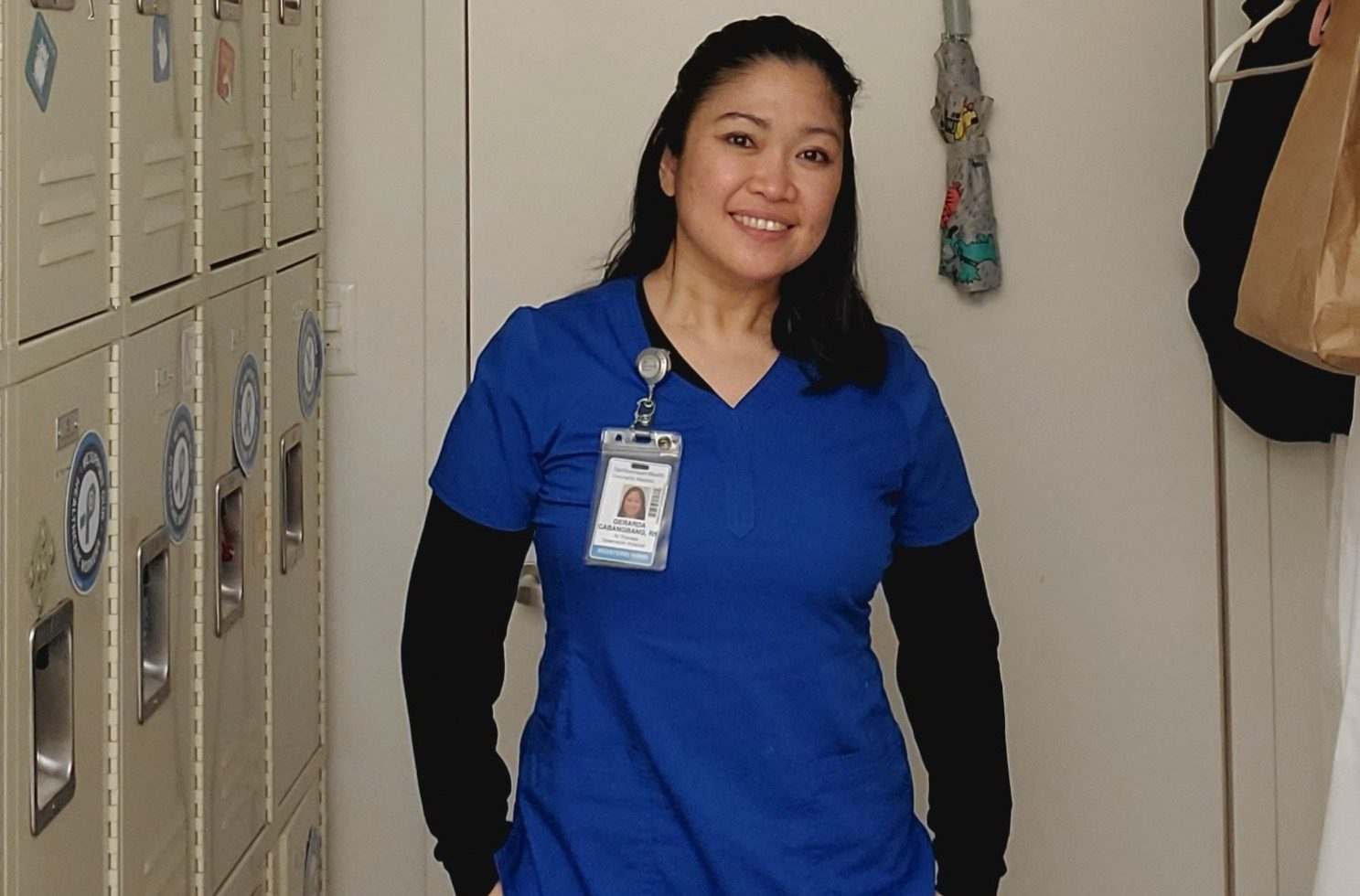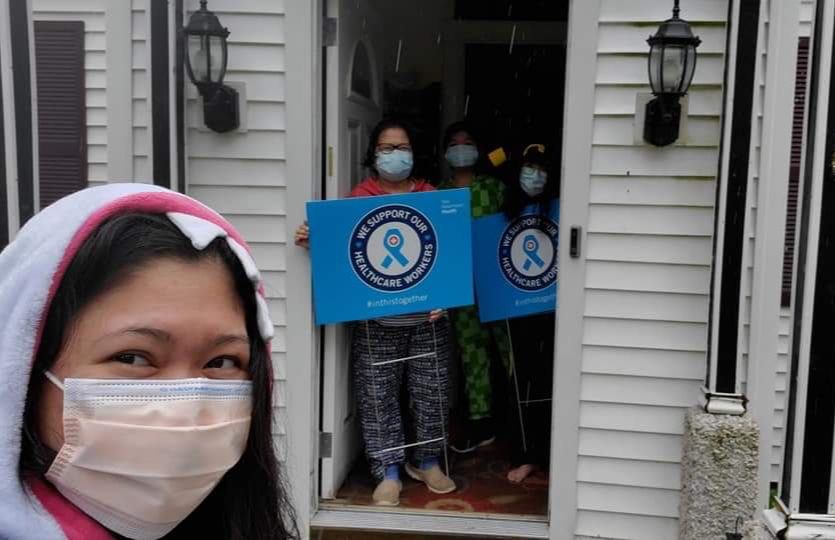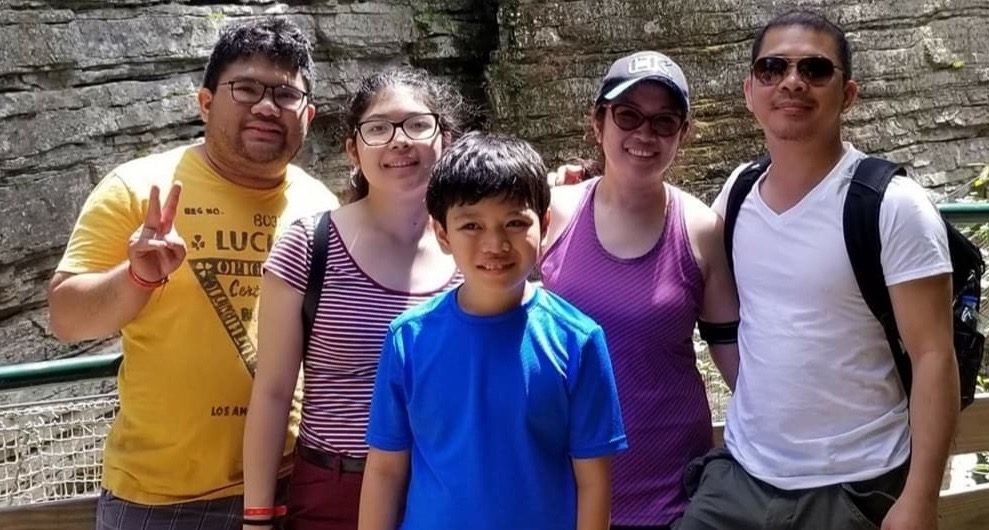SUMMARY
This is AI generated summarization, which may have errors. For context, always refer to the full article.

ARIZONA, United States – Drawing from their shared frontline experience, a Filipino-American nurse and his wife helped their family survive the deadly coronavirus disease in the comfort of their own home.
Dennis Cabangbang, 43, works in the orthopedic and neurological care unit of a public hospital in Connecticut – a state that borders New York, the center of the coronavirus crisis in the US. Prior to this, he worked for more than a decade as a respiratory nurse – an expertise that would later prove useful for him.
Dennis took care of coronavirus patients. Like most US and global hospitals, his workplace has a huge shortage of personal protective equipment (PPE). (READ: Working with fear and anxiety: Filipino nurses as UK frontliners vs coronavirus)
By the end of March, he started feeling mild symptoms of back pain, abdominal pain, and fatigue. He later developed a fever while his body pains got worse.
He got tested and the results hardly surprised him. Dennis – a nurse for more than two decades – already knew he had contracted the disease.
“I already expected that I would test positive because a lot of our patients in the unit have the virus. Unlike other countries, we don’t have reliable PPE. We’re not actually ready to handle this kind of situation. I handle at least 5 patients every day but it can go as high to at least 7 during night shift,” Dennis told Rappler in an interview.
A few days after, his symptoms worsened. By the second week of April, his fever hit 41 degrees Celsius and he started having difficulty breathing.
Despite this, Dennis and his wife Gerarda, an emergency nurse who also deals with COVID-19 patients, decided that he should just stay at home.
‘Worst pain I ever had’
The couple said they don’t give the same advice to patients. It was different for them, they said, because they both have experience treating COVID-19 patients. Dennis also has a background in respiratory care.
“We don’t recommend it. But we are in the medical field. We know when to send patients out. I know that if he gets worse, he would have to be intubated…. Basically we’re closely watching his progress…. The coaching and knowledge we have helped a lot,” said Gerarda, who worked in the Philippines during the SARS outbreak in the early 2000s.
“Since we are both nurses, we decided it would be best for me to stay home because I would be able to move more in the house and I would have more food options. I will be closely taken care of here. We would just call our primary physician,” Dennis said.
At one point, his oxygen level went down to 88%, a cause of concern for otherwise healthy individuals. A movement as simple as walking to the bathroom felt like climbing a mountain.

“Later on, I developed shortness of breath, cough, and more intense fatigue. I was catching my breath even just going to the bathroom. My body joints hurt a lot. It was the worst pain I ever had. I could not even finish my sentences,” he said.
“So what I did was do prone positioning (lying face down) just so I could catch my breath. I also did the knee-to-chest position,” he added.
One of the doctors in his wife’s hospital gave him the antibiotic azithromycin, usually used alongside hydroxychloroquine, a known malaria drug, to treat coronavirus. Dennis said he did not take the latter, as it could only be accessed in a hospital.
On top of this, he regularly took cough syrup and acetaminophen – more commonly known as paracetamol in the Philippines – every 6 hours to ease his fever.
No place he’d rather be
Dennis also resorted to other non-medical tools and relief in his fight against the virus: a leg compression or massaging device to avoid clotting of the blood, menthol candies, and hot ginger tea.
He also did the Trendelenburg position, wherein the extremities were positioned higher than the torso “so I could release secretions and so that they would not end up in my lungs.”
“I had very sticky secretion in my chest,” Dennis said.
Despite being isolated in his own home, there’s still no place he’d rather be. He attributed his recovery to the warmth of their home. He lives with 6 other family members: his wife, 3 children, a sister, and his mother-in-law.
“Here, I can move around. I can eat what I want – more on soup and tea. In the hospital, there are only a few options. My thought then was that I would gain energy faster at home than in the hospital. I said I would go to the hospital if all our applied knowledge won’t work,” he said.

When he exhibited symptoms, Dennis isolated himself, first, in their basement, then later in their recreational vehicle (RV).
After 3 weeks, his symptoms were gone. But he couldn’t be retested due to the lack of testing kits. The US Center for Disease Control and Prevention return-to-work criteria for healthcare professionals include a symptom-based strategy, wherein staff are allowed to return 3 days after recovery (defined as resolution of fever without medications and improvement in respiratory symptoms); or at least 10 days since symptoms first appeared.
Virus spread, family torment
Despite his isolation efforts, the couple’s eldest son was not spared from the disease. Fortunately, this time they were able to quickly address the symptoms.
“Our son’s first symptoms were sore throat and a little body ache, so we told him to get himself tested immediately…. Of course, I felt guilty because he got it from me,” Dennis said.
After testing positive, their son started taking the same antibiotic, azithromycin. Unlike Dennis, his son did not experience shortness of breath – just fever and body pains.
“We are thankful we were able to nip it in the bud,” he said.
Now his son remains isolated in their basement while recovering, while he remains in the RV.


As for Gerarda, she continues to work in the emergency room. So far, she said, she had no symptoms. But whether or not she contracted the disease was still unknown. After all, nurses in the US could only get tested if they show signs of the disease.
With almost everyone in their family serving at the front lines, the past few weeks were nothing but tormenting for her.
Their daughter, 19, works as a secretary in a nursing home. Their younger son and her 65-year-old mother work in a dairy store, a considered an essential business in the state. All, except Gerarda, stopped going to work to do self-quarantine.
“It’s been a rough 3 weeks for us…. We are 7 in the family. It is difficult knowing it’s gonna be you next…. Social distancing at home is very hard. It’s torture to think they might have it,” Gerarda said.
“This is the longest time my husband I have been apart. It’s difficult running a 7-person household alone. I felt I was by myself taking care of the whole family,” she added.
Now that Dennis has recovered, life goes on for him. On Monday, April 27, Dennis went back to the hospital after being cleared by a physician.
The couple are more than thankful that their family conquered the virus. The battle, however, does not end there. As with other healthcare workers, the family remains on guard.
“The fear is always there. This is a horrible disease. I’ve never seen this much death,” Gerarda said. – Rappler.com
Add a comment
How does this make you feel?
There are no comments yet. Add your comment to start the conversation.